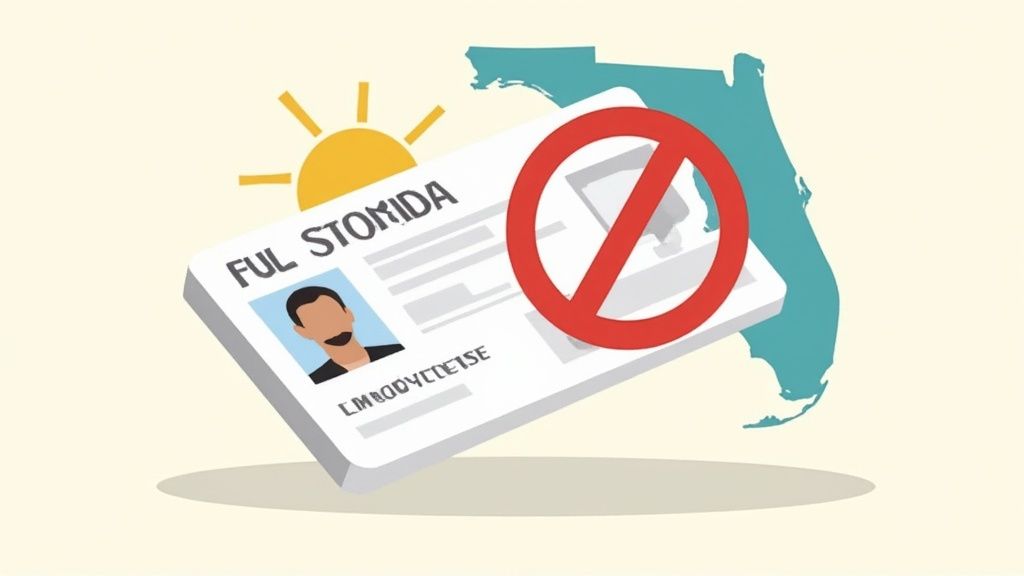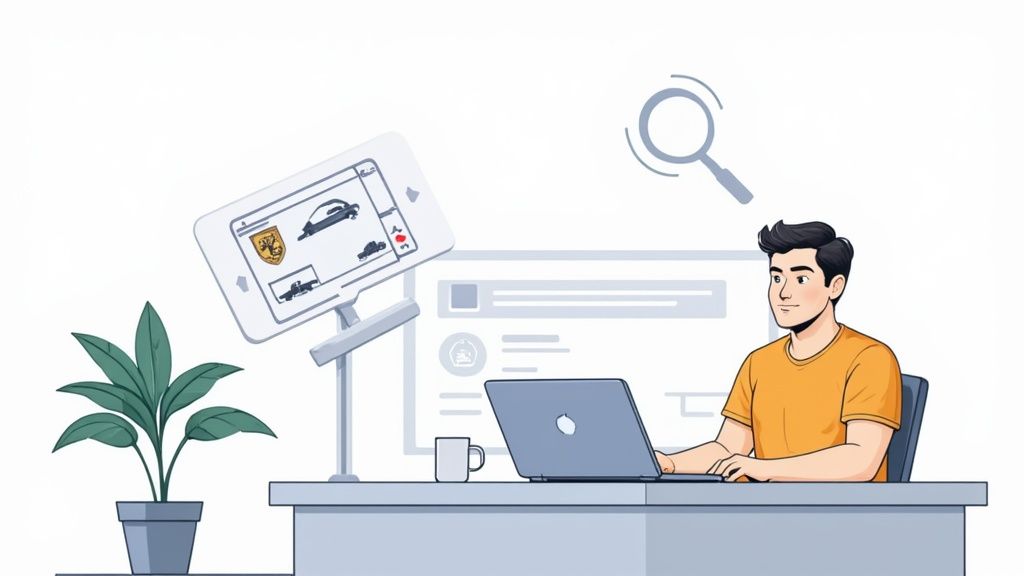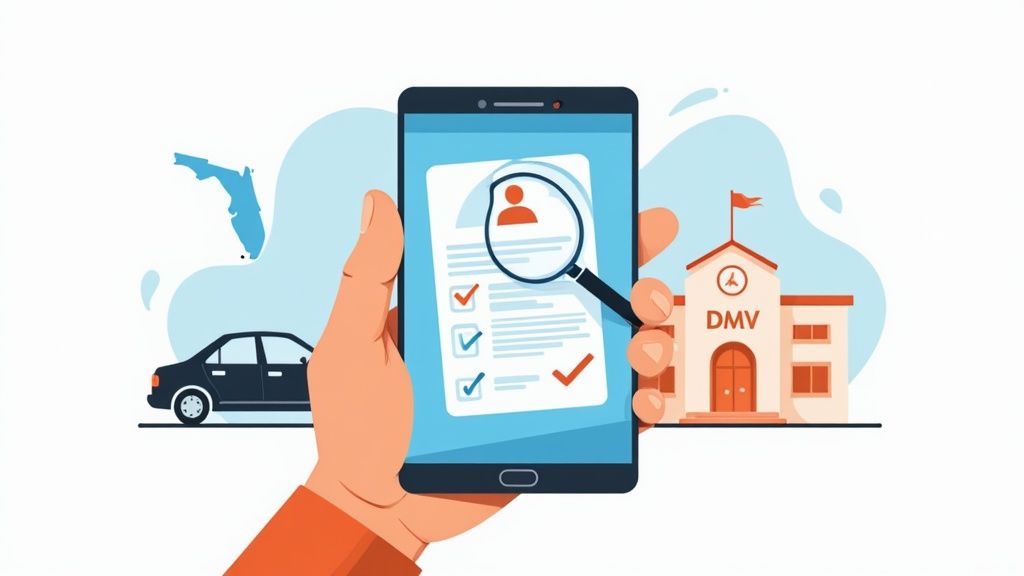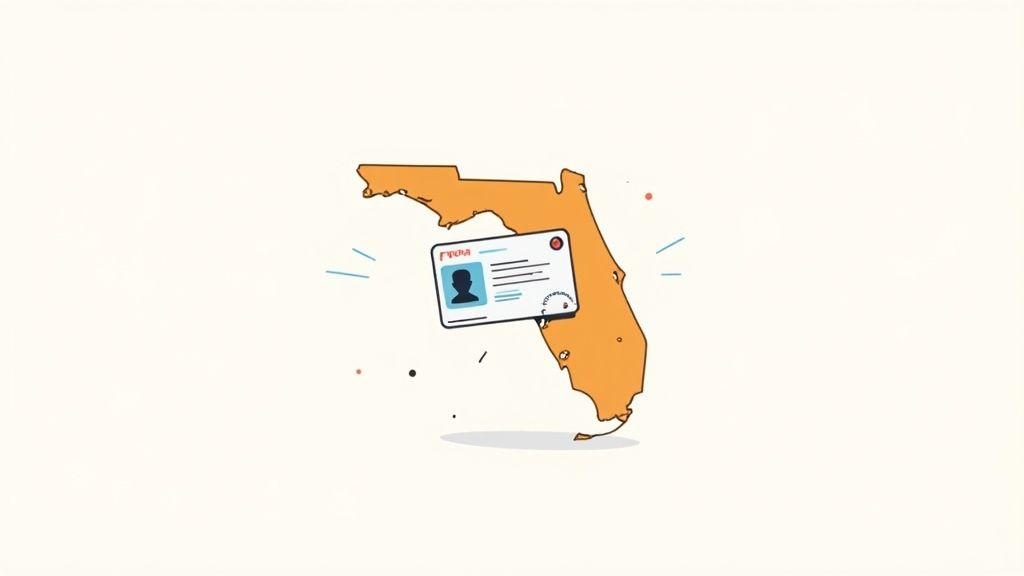Defensive driving transforms how you approach every mile on the road. It means staying proactive rather than reactive behind the wheel.
At DriverEducators.com, we see drivers reduce their accident risk by up to 50% when they master these techniques. The National Safety Council reports that defensive driving prevents over 2.5 million crashes annually across the United States.
What Makes Defensive Driving Work?
Mastering the Three-Second Buffer
The three-second rule forms the backbone of safe driving, but most drivers apply it incorrectly. Count one-thousand-one, one-thousand-two, one-thousand-three after the vehicle ahead passes a fixed object. If you pass that same object before you finish your count, you follow too closely. This simple technique helps prevent rear-end collisions, which commonly cause head and neck injuries including whiplash.
Weather conditions demand even more space – wet roads require four seconds, snow and ice need six seconds minimum. Heavy traffic tempts drivers to close gaps, but you must maintain this buffer to get the reaction time that saves lives.
Constant Environmental Awareness
Your eyes should move every two seconds while you drive. Check mirrors, scan blind spots, and monitor cross traffic continuously. Regular mirror checks help drivers stay aware of their surroundings and reduce lane-change accidents.
Watch for pedestrians who step between parked cars, cyclists who approach intersections, and vehicles that merge without signals. Look through the windows of cars ahead to spot brake lights early. Professional truck drivers use the Smith System (they scan 12-15 seconds ahead in city traffic and 20-25 seconds on highways).
Driver Behavior Pattern Recognition
Other drivers telegraph their intentions through subtle cues most people miss. A vehicle that drifts slightly toward lane markers signals an upcoming lane change, even without turn signals. Brake lights that tap repeatedly indicate hesitation or confusion.
A staggering 96% of drivers admit to engaging in aggressive driving behaviors, which makes prediction skills vital. Watch for drivers who accelerate toward yellow lights, phones held near wheels, and erratic speed changes that indicate distraction or impairment.
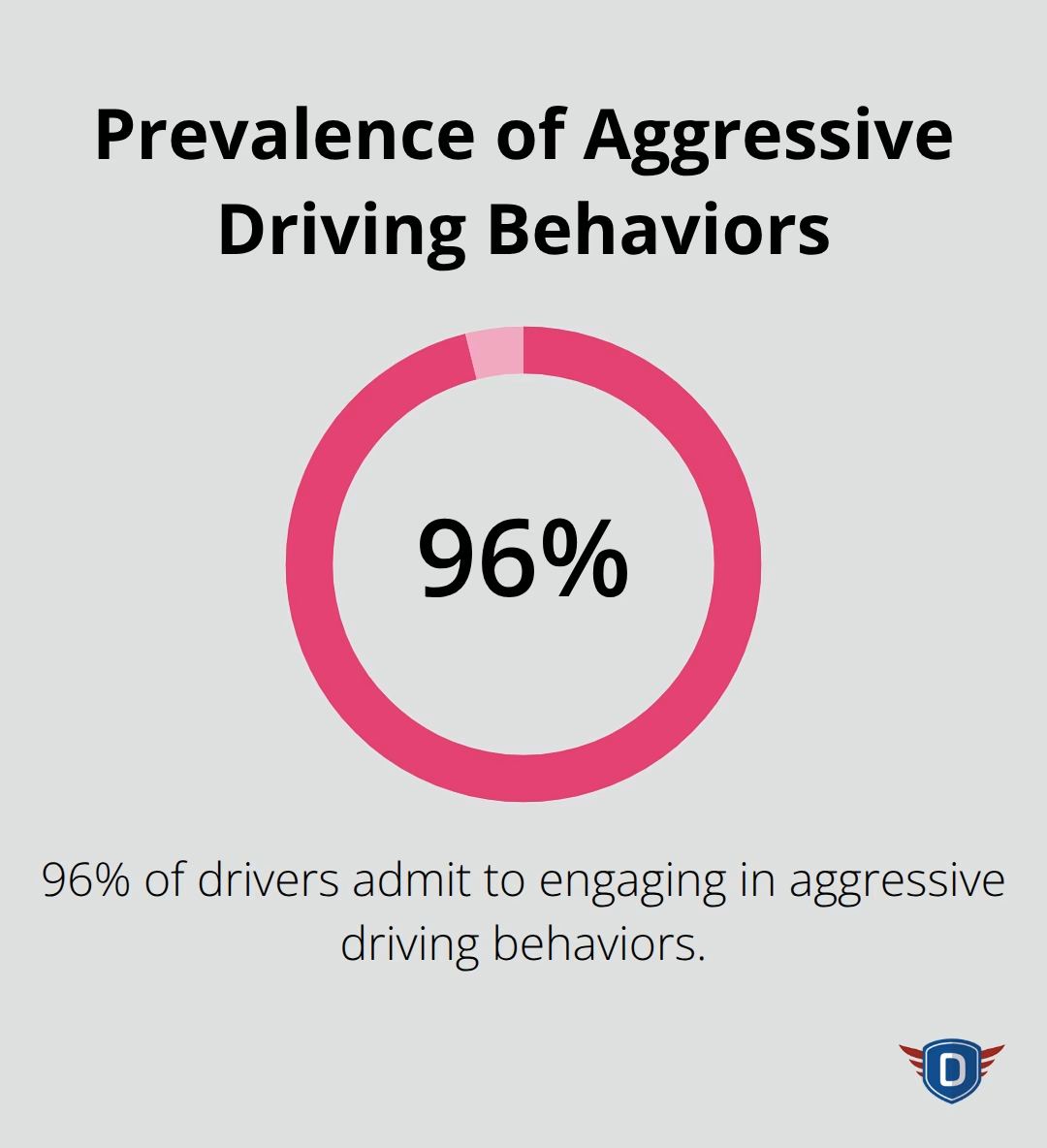
These observation skills prepare you to handle the specific techniques that turn defensive awareness into practical road safety strategies.
Which Techniques Actually Prevent Crashes
Advanced defensive drivers master precise timing and spatial awareness that most people never develop. The three-second rule works for normal conditions, but road hazards demand calculated adjustments.
Extended Distance Rules Save Lives
Extend your distance to four seconds when rain reduces tire traction, six seconds during snow or ice conditions, and eight seconds in heavy fog where visibility drops below 500 feet. Front crash prevention systems significantly reduce rear-end collisions according to IIHS research. Commercial drivers who maintain these extended distances experience 60% fewer accidents (according to Federal Motor Carrier Safety Administration data).
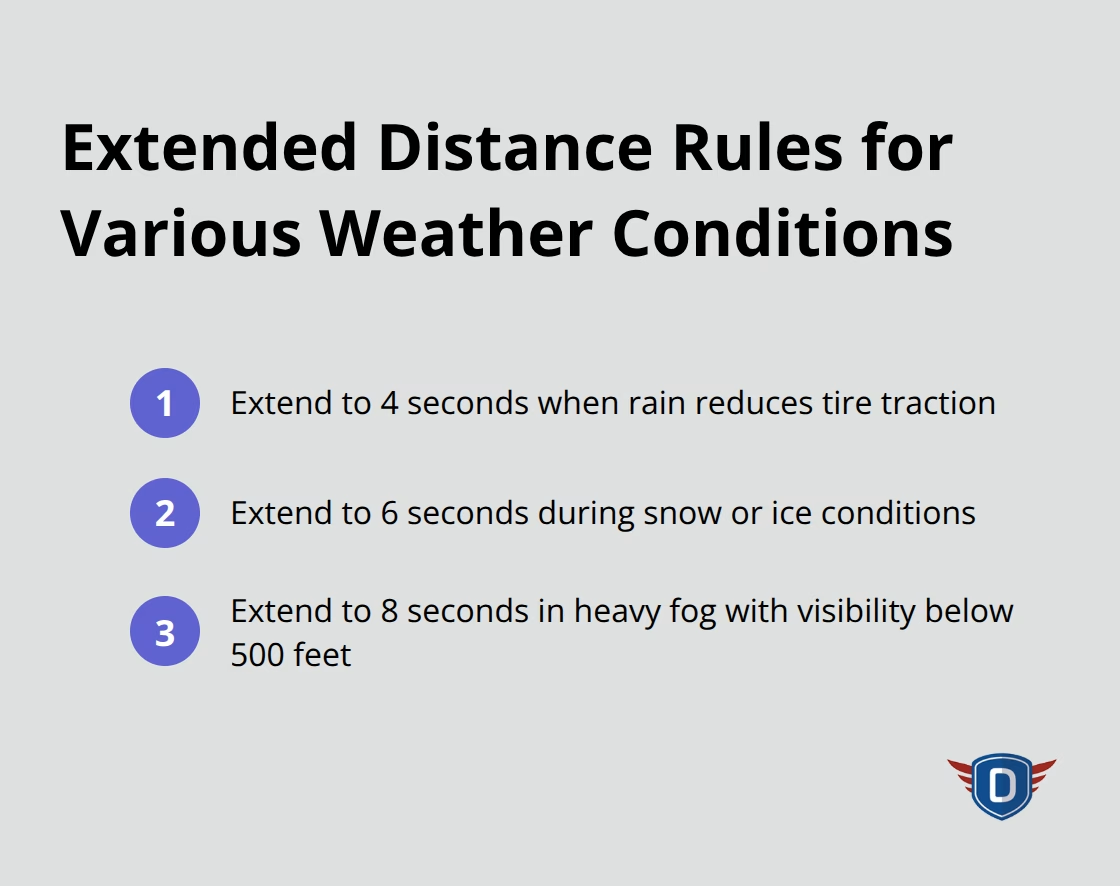
Mirror Position Eliminates Blind Spots
Your mirrors should eliminate blind spots completely when you position them correctly. Adjust side mirrors outward until the edge of your vehicle just disappears from view – this creates continuous coverage with your rearview mirror. Check mirrors every five to eight seconds, not just before lane changes. The National Highway Traffic Safety Administration reports that proper mirror usage prevents 14% of lane-change crashes. Shoulder checks remain necessary because mirrors cannot capture motorcycles, cyclists, or low-profile vehicles in certain positions.
Speed Reduction Prevents Fatal Crashes
Posted speed limits assume perfect conditions that rarely exist. Drop 5-10 mph below limits during light rain, 15-20 mph in heavy downpours, and 25 mph or more on ice. Research shows that speed increases are associated with higher fatality rates on interstates and freeways. Night drivers face similar challenges – visibility drops to 160 feet with low beams and 450 feet with high beams, yet most drivers maintain daytime speeds. Construction zones require immediate speed drops regardless of traffic flow (worker fatality rates spike 400% when vehicles exceed posted work zone limits).
These technical skills work best when drivers understand the broader advantages that defensive practices deliver both financially and personally.
What Financial Impact Does Defensive Driving Create
Defensive drivers see measurable financial returns that compound over years of consistent practice. Insurance companies recognize this value through premium discounts that range from 5% to 15% for drivers who complete certified defensive courses. State Farm reports that drivers with clean records who maintain defensive habits save an average of $400 annually on insurance costs. The Insurance Institute for Highway Safety found that drivers who avoid accidents for five consecutive years qualify for additional safe driver discounts that can reduce premiums by up to 25%.
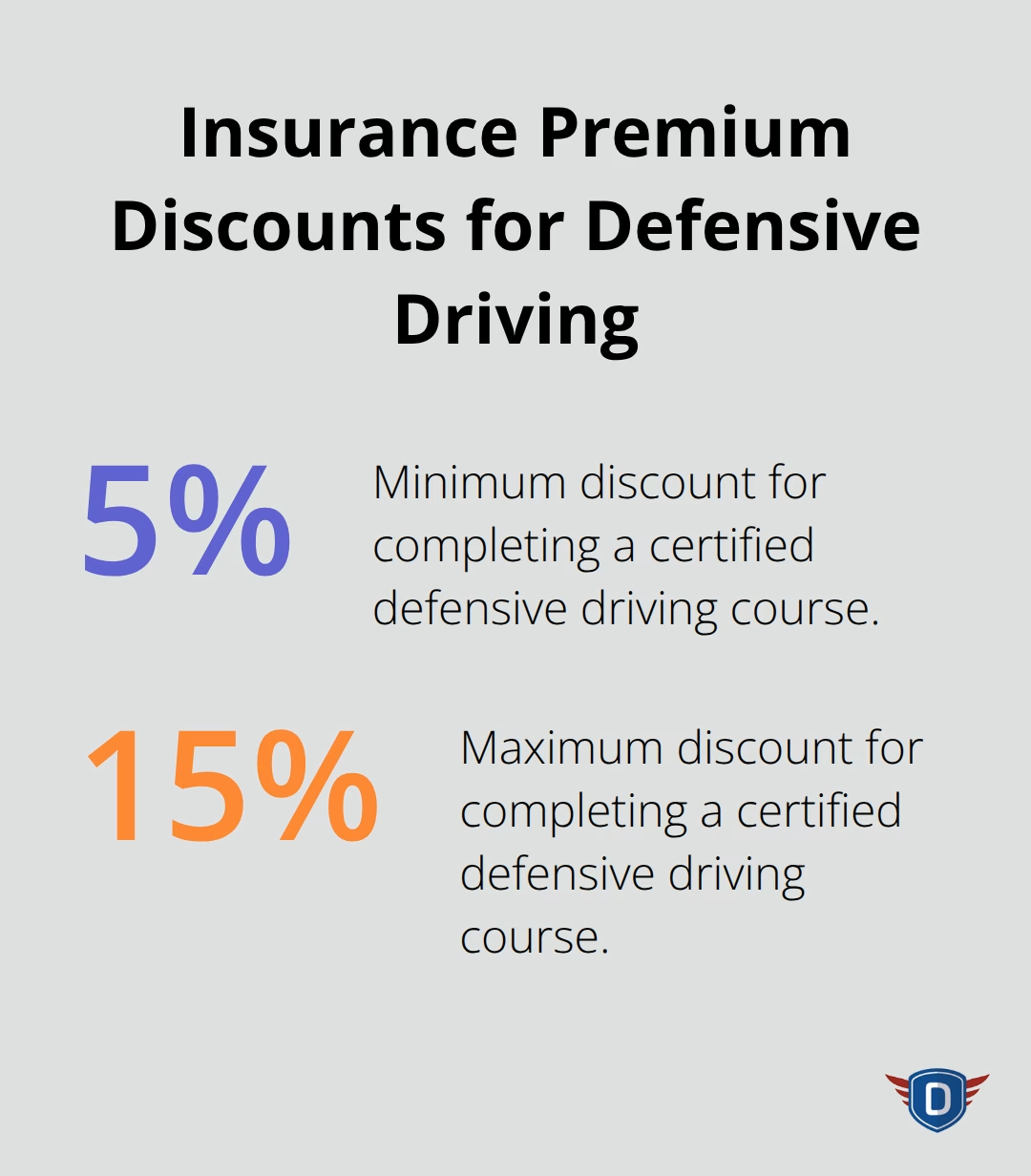
Accident Prevention Saves Thousands in Damage Costs
The average property damage claim costs $6,551 according to the Insurance Information Institute, while bodily injury claims average $26,501 per incident. Defensive drivers who maintain proper distances and practice hazard recognition help reduce rear-end collisions that typically result in these expensive claims. Medical expenses from traffic accidents average $57,000 per serious injury case, with some cases that reach six-figure amounts for permanent disabilities. Workers who miss time due to accident-related injuries lose an average of $8,900 in wages during recovery periods (based on Bureau of Labor Statistics data). Fleet operators who implement defensive driver education see accident rates drop by 35% within the first year, which translates to millions in saved costs for commercial operations.
Vehicle Maintenance Costs Drop Significantly
Defensive techniques extend vehicle lifespan through reduced wear on critical components. Smooth acceleration and gradual stops preserve brake pads 40% longer than aggressive patterns. Steady speeds improve fuel efficiency by 15-20% compared to rapid acceleration and hard stops. The Department of Energy confirms that aggressive drivers reduce gas mileage by up to 33% on highways and 5% in city traffic. Defensive drivers who avoid sudden stops and starts experience 25% less transmission wear and reduce tire replacement frequency by 30%. Engine maintenance intervals extend when drivers avoid excessive RPMs and maintain consistent speeds (this saves hundreds annually in service costs).
Final Thoughts
What does defensive driving mean in practice? It transforms your approach to every mile through proactive awareness, proper distance, and hazard recognition. The three-second rule, extended distances in poor conditions, and continuous environmental scanning form the foundation of accident prevention.
The statistics speak clearly about defensive impact. The National Safety Council reports over 2.5 million crashes prevented annually through these techniques (drivers who master defensive skills reduce their accident risk by up to 50% while saving hundreds in insurance premiums and vehicle maintenance costs). Road safety improves when more drivers commit to education and skill development.
The 94% of crashes attributed to human error shows tremendous potential for improvement through proper training and consistent practice. We at DriverEducators.com provide comprehensive driver education programs that help students develop lifelong safe driving habits. Our instructors understand that defensive techniques require continuous refinement, not one-time learning.
